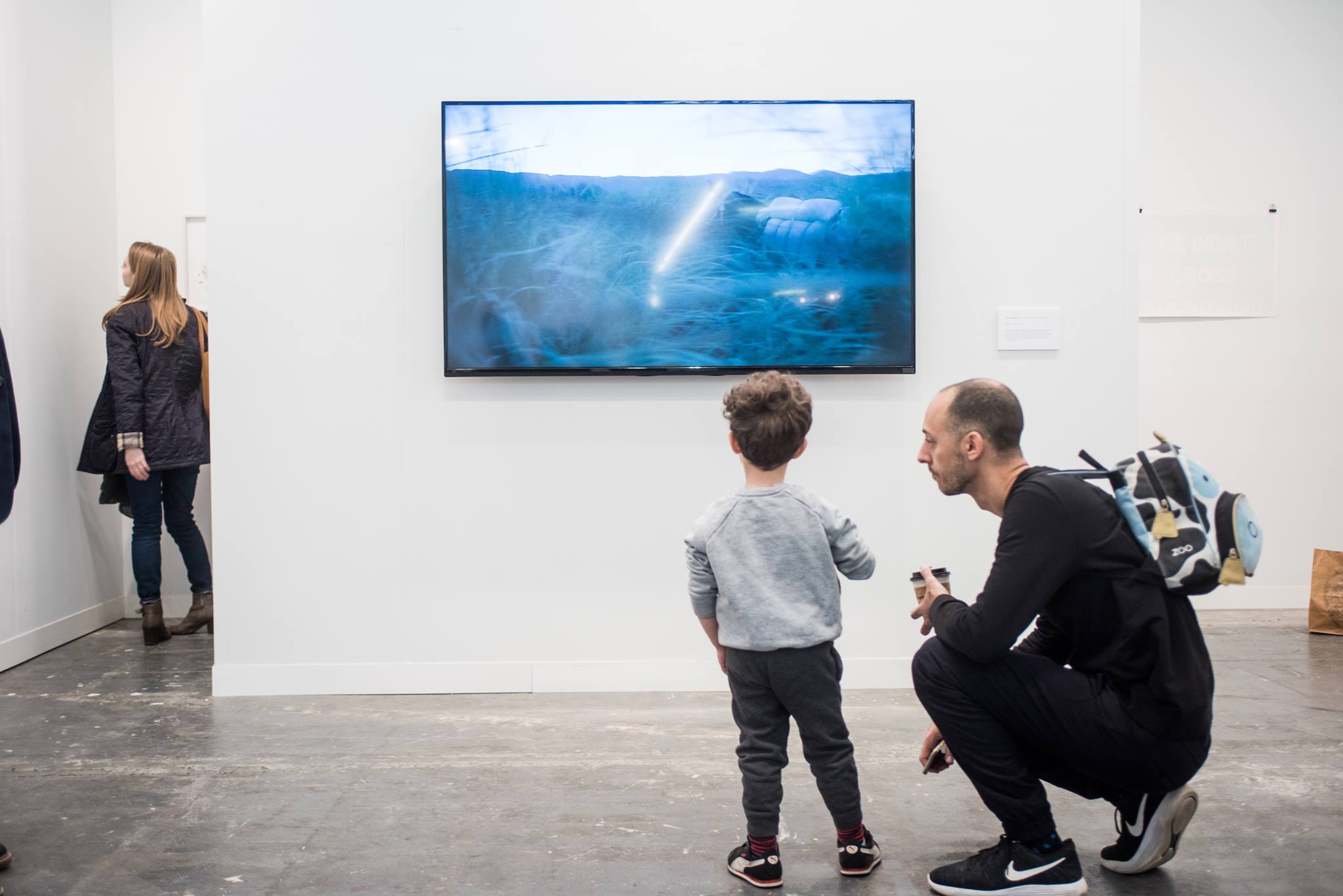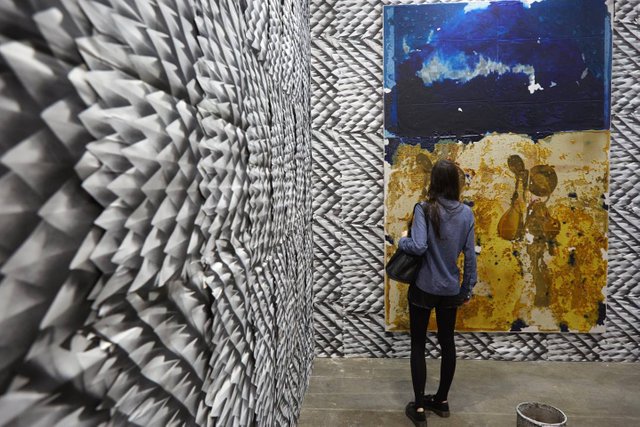Art investment in 2018: what you need to know
The art market has come a long way in the past two decades. During that time, global sales have quadrupled as a growing number of people embrace art as an asset class on a par with equity bonds or real estate. Along the way, art funds have emerged and found their footing as a serious investment option, allowing investors to access the market with the help of market experts. Meanwhile, art as collateral is becoming increasingly popular, allowing collectors to borrow against the value of their art investments. In 2018 art investment continues to break new ground, with bitcoin and blockchain beginning to play a role and additional services, from insurance to storage, becoming increasingly sophisticated.

AN ATTRACTIVE PROSPECT
The art market is now dominated by investors. According to the Deloitte Luxembourg & ArtTactic Art & Finance Report 2017, 86% of art purchases are motivated by collecting with an investment view, a 26% rise since 2012.
“Since the Fine Art Fund was launched back in 2001 the perception of art as an asset has changed fundamentally; it has been recognised as a value store and we are now lending against art as collateral,” says Philip Hoffman, CEO of the Fine Art Group.
Massimiliano Subba, managing partner of Anthea Art Investments AG, an investment and advisory boutique specialized in Post-War & Contemporary art, agrees that art is now firmly established as an asset class, leading to a corresponding evolution in the services available for investors.
“A number of services developed for traditional asset classes are or will shortly be also available for art,” he says. “In 2018, we will see more advanced versions of those services in the art world. For example, we may see risk management services, such as insurance, combined with asset management operations, encompassing products relating to valuation, cataloguing, insurance and logistical optimisation - all services which fall underneath the management umbrella of an asset class.” Rayah Levy, CEO of art investment company ArteQuesta, expects 2018 to be a very good year for art as an asset class.

© Art Basel Hong Kong
“As many of the recent financial, luxury and wealth reports have shown, art has been shaping up to be one of, if not the, asset class for 2018,” she says. “As global economics continue to shift around the world, it has become clearer to individuals as well as banks, hedge funds, investment banks and insurance companies, that art is one of the strongest assets in the world, and seen as a global form of commerce.” She notes that while it becomes harder to move money to countries globally, individuals, corporations and companies can still purchase art at the multi-million-dollar level, and then move the art to their country for safekeeping, with relative ease.
“Art can be traded around the world now with greater ease and due diligence than ever before,” she says.
Hoffman agrees that this will be an important theme in 2018, with works being sold around the world creating a universal currency. “When the pound dropped the UK market attracted buyers from Asia and the US who wanted to capitalise on the opportunity. Investors need to be aware of how currency will impact purchases and sales,” he adds.
CHANGING ATTITUDES
Levy anticipates that in 2018 we will see the continued expansion of art as an asset class and the associated issues around storing, building and donating art for preserving wealth. In the US, the new tax reform bill could influence the market. Key changes include the repeal of estate tax, which could influence estate planning; and the repeal of section 1031, which currently encourages investors to re-invest in art after selling art, in order to defer capital gains tax.
Communication is also set to evolve, says Subba. He notes that the art world has historically been resistant to change, favouring traditional structures and means of communication - and this has included a reluctance to embrace social media.
At the same time, Subba expects to see the ongoing evolution of services linked to new technologies such as blockchain, augmented and virtual reality as a way to bring younger generations closer to art by allowing the enjoyment of a multi-dimensional, interactive experience.
“This is important because this is what is needed for the market to grow over the next 20 years,” he says.
Blockchain – essentially an electronic ledger that creates transparency around business transactions – can help investors make speedier transactions, track provenance and cut out transaction fees. It can also help streamline transactions for insurers and logistics companies, and again, create savings by cutting out the middlemen. Examples of blockchain innovators operating in the art market include Maecenas and Artlery.
AVOIDING THE PITFALLS
“Art investing has moved into a mature stage, which doesn’t mean the market is going to go down but it’s also true that not everything will go up,” says Subba. “It’s not like Bitcoin which is sky rocketing because it’s propelled by not yet established fundamentals; art is a different situation but because it is becoming more sophisticated you need to really know where to put your money.”
Subba recommends carefully considering what you expect from your investment in terms of return, taking on risk and when to sell. A structured approach is key – and it’s worth remembering that while the art market is an attractive and fascinating environment, you can easily lose money if you make poorly informed decisions and fail to pay attention to patterns in the market.
If you do not have the time and knowledge yourself, find an expert to help you. This can involve looking beyond gallery owners and dealers, however.
“Not all art is an investment,” warns Levy. “Working with a qualified and experienced art advisor who specializes in art as investment makes a big difference from working with an art advisor who simply sources and sells artwork.”

Cao Fei Derivation Blurs the Virtual and Physical Worlds (2017). Courtesy of Cao Fei and Vitamin Creative Space.
Hoffman agrees, saying that one of the biggest pitfalls for an investor is misunderstanding the market, or not taking the time to build an adequate level of knowledge.
“Without a deep understanding of how to value art it is very difficult to make a profit. Art investment isn’t all numbers and projections; our art team spend a huge amount of their time monitoring the market, travelling to see art works and building a network.” It’s also wise to take a broader view of the outlay involved in making your investment – because buying an artwork is only part of the picture.
“I always advise collectors and investors to be aware of hidden costs; storage, insurance, shipping and auction premiums can quickly turn an investment into a sunk cost,” says Hoffman. Another pitfall is getting caught up in the excitement when prices become inflated after a record-breaking auction.
“It is important to track an artist’s market beyond a few high prices,” says Hoffman “Just because an artwork was bought for X doesn’t mean there is a buyer out there who will pay more next time. Take the example of the Basquiat sold May at Sotheby's - that was a one-off price and doesn't mean the market has shifted for the artist.”
5 TIPS FOR SUCCESSFUL ART INVESTMENT
— Don’t underestimate the knowledge and experience needed to successful buy and sell art for a profit.
— Diversify your portfolio. “Whether this is by period, artist, medium or region it helps to mitigate risk and can be vital when holding artworks for long periods of time,” says Hoffman.
— If you are new to investing or collecting art then take some time to develop your taste and knowledge. “Visit art fairs, museums, galleries and auctions, not to buy, but to look,” says Hoffman.
— Seek the advice of an independent art advisor, who can help with sourcing art, sales strategy, collection management and education.
— Invest in artists with a consistent and possibly solid museum exhibition history, who show a steady and regular production over a number of years, and are represented by established galleries or dealers. “For younger artists look for the ones with innovative and authentic ideas – avoiding the mimics of déjà vu styles and concepts,” adds Subba. “Look for something new and consistent.”